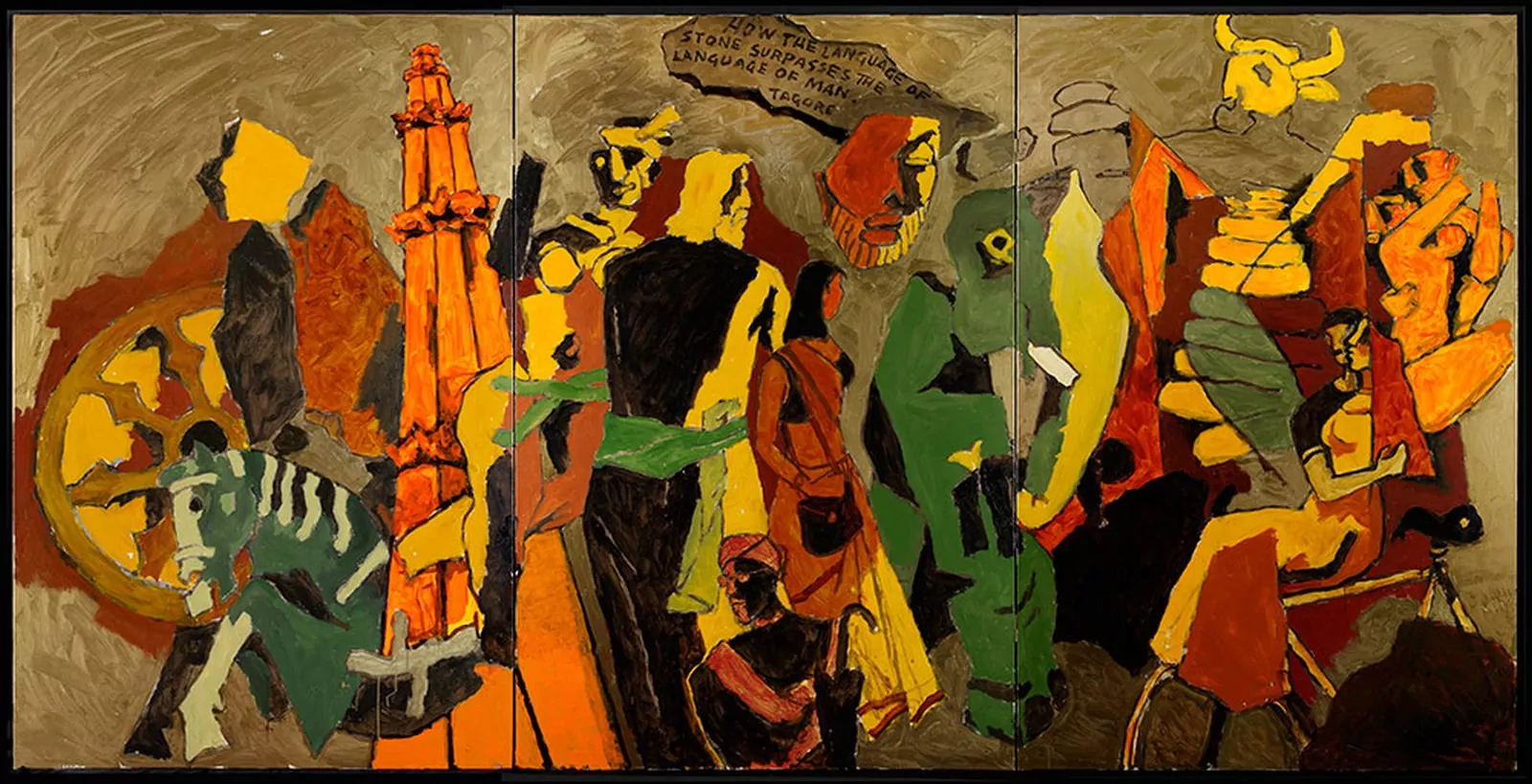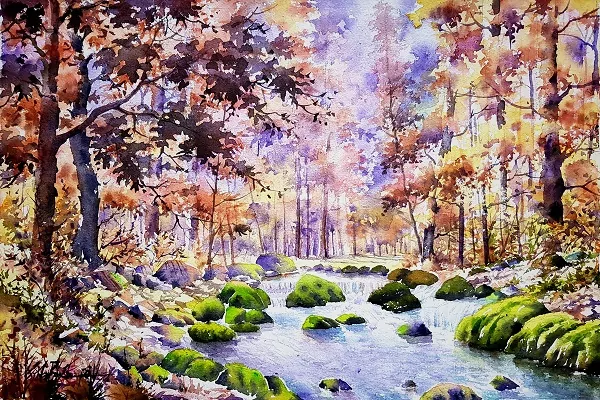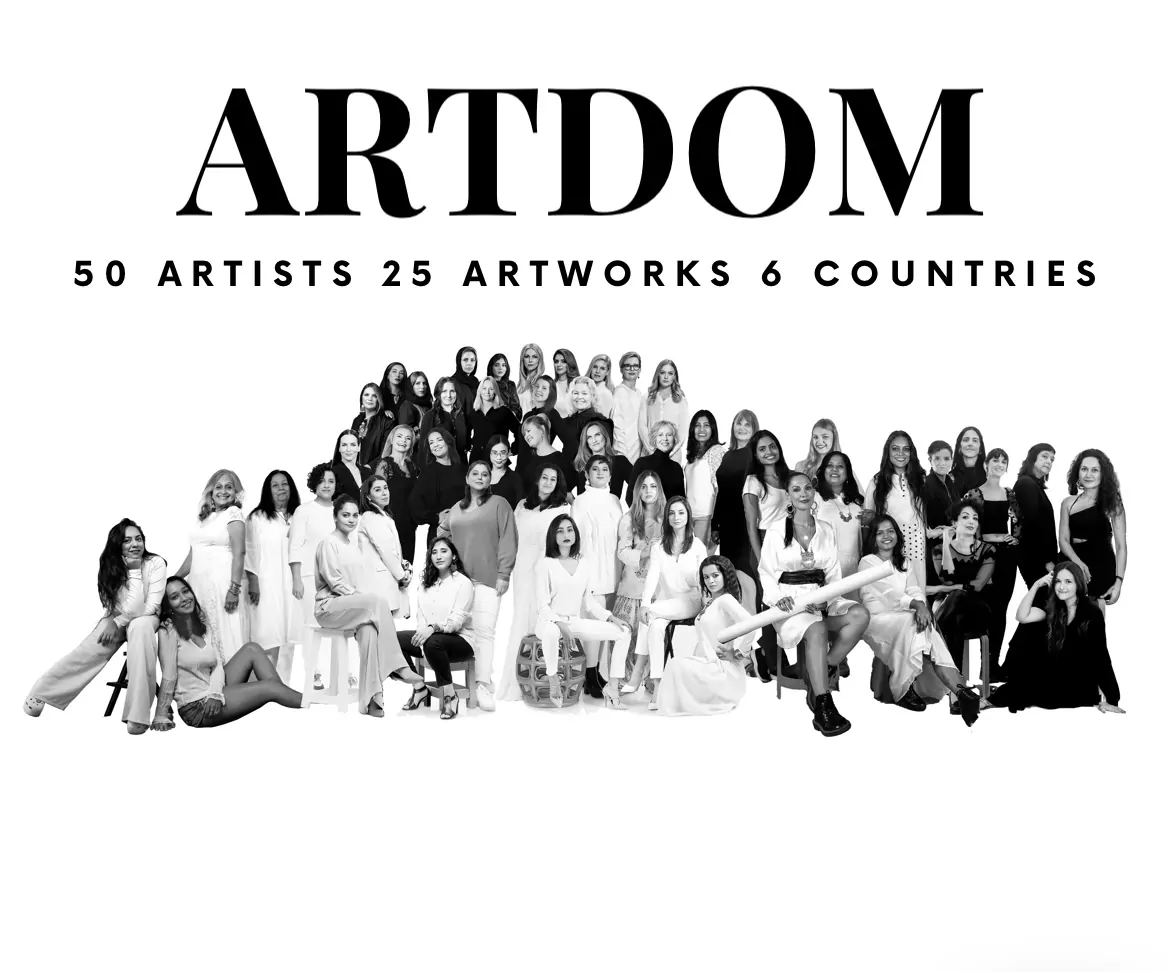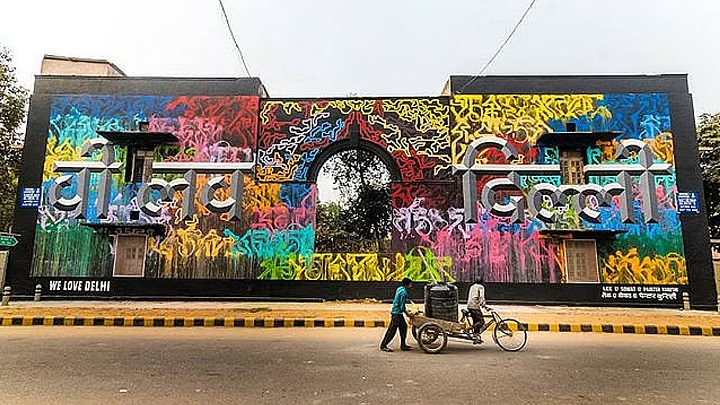Introduction
Indian art has a rich history, profoundly intertwining the essence of human expression with artistic forms throughout the evolution of humankind. It encompasses a collection of creative methods dating to the prehistoric era and has significantly expressed human ideas and emotions through various artistic creations. There are various art movements in India, famous for this artistic expression.
You would have already guessed, but it’s true that some of the oldest art ever has been discovered during excavations in India! Among these finds are the Bhimbetka and Daraki-Chattan cave paintings, which belong to prehistoric art, dated around 700,000 BC. These artefacts belong to the excavation history of Madhya Pradesh, found within two ancient quartzite caves. It’s truly fascinating, isn’t it?
Colored in different hues, art movements in India shine through our history. From ancient to contemporary, India has been filled with spectacular minds ready to create majestic paintings. But first, let’s look at the various Indian art periods!
History of Art Movements in India and Indian Art Periods
Art periods in India are sprinkled with a variety of art forms such as painting, sculpture, pottery, and different textile arts. The prehistoric settlements were the initiators of Indian art. As time progressed, the art forms were affected by various religious influences of Hinduism, Buddhism, Jainism, Sikhism, and Islam.
Indian art periods can be divided based on historical, cultural, and artistic developments. The following division of the art period is done through a historical lens. So without further ado, let’s dive right in!
1. Ancient Indian Art
The ancient Indian art period focuses on cave paintings, rock carvings, and Indus Valley artistic ventures. The rock art of India includes carvings, engravings, and paintings from the Stone Age. The Indus Valley civilization is famous for its terracotta figurines and the seals they manufactured. Post that comes the Vedic period, which was known for its ritualistic and symbolic art. It included the worship of deities and the performance of sacrificial rituals.
Did you know? The earliest rock carvings were discovered by Archibald Carlleyle!
2. Early Indian Art
Usually, ancient Indian art and early Indian art aren’t separated. However, we have made this distinction because the early Indian art period showed the emergence of dynasty-inspired art. The period started with Mauryan art and the adoption of Buddhist influences. One of the most visible creations of this period is the Pillars of Ashoka. After that, the Yakshas of the 2nd century BCE were known for the creation of colossal cult images. During this era, The Satavahana dynasty ruled in Central India and sponsored various Buddhist monuments, stupas, temples, etc. This marked the prevalent Buddhist Art era. Also, if you’re familiar with Ajanta caves, it was this dynasty that made the magic happen! However, the peak of the early art period came during the Gupta period.
3. Medieval Indian Art
During the Medieval Indian art period, the Indian landscape was highly influenced by Hinduism. There were numerous achievements in sculpture, temple architecture, and artistic expression. After the decline of the Guptas, several regional kingdoms emerged and each developed its distinct art styles. This included the Pallava, Chalukya, and Rashtrakuta dynasties of southern India (are you thinking about PS-1&II?). The Chola period is also renowned for its exquisite bronze sculptures of Shiva, Vishnu, and their consorts. The Pala Empire saw Bengal emerging as a pioneer of painting in Asia. Pala art is known for its refined, elegant, and sensuous sculptures found at Nalanda, and Vikramshila universities among other places. Parallelly, there was a rise of Islamic influences in Indian art, particularly in Delhi. One of the biggest pieces of evidence is the Qutb Minar complex in Delhi.
4. 15th to 19th Century Art
This period is marked by Mughal art. The Persian-inspired miniature painting techniques of India became very famous during this period. It was Emperor Humayun who brought two of the finest Persian painters – Mir Sayyid Ali and Abd al-Samad. The miniature paintings depicted various subjects like portraits, court scenes, hunting scenes, etc. The Rajput and Pahari kingdoms in North India developed their distinct style of miniature painting. These depicted royal courts, romantic narratives, and religious themes.
We know this seems like an impromptu history lesson, but oh, Arts help us. Indian art periods are so vast! Apart from the Mughals and Rajputs, there were many other dynasties with distinctive architectural style paintings. From the mid-19th century, British colonial rule had a huge impact on Indian art. The East India Company established several art schools to train Indian artists in European painting techniques. This period is also strewn with Indian independence art, which expressed nationalist sentiments and resistance against colonial oppression. The British period also saw various great artists such as Raja Ravi Varma. Many paintings such as “Bharat Mata” by Abandindrananth Tagore signified the Indian freedom struggle paintings.
5. Contemporary and Modern Indian Art
Drum rolls please, you have landed on the period which is known for art movements in India! This period witnessed significant shifts in artistic approaches, styles, and themes as Indian artists engaged with global artistic trends to express their unique Indian identities. The early 20th century marked the revival of traditional art forms and techniques through the Bengal School of Art. Then, six artists established the Progressive Artists’ Group in Mumbai in 1947 to break away from traditional conventions and embrace modernism. This period is also famous for artists such as Subodh Gupta and Bharti Kher for their engagement with social, political, and cultural themes.
Now that we are done discussing the art periods, let’s move on to some famous art movements in India. But before that, pay a closer look at why we talked about different art periods of India. A country as vast as India saw many cultural shifts throughout the years, especially in terms of art. Different dynasties and religions had their ways of expression which marked the cultural art shifts during that time. Hence, while Buddhist art, Medieval art, and Mughal art are some famous art movements, they were pioneered by religious or cultural thought rather than a few artists themselves. The following art movements that we’ll be talking about are the ones that were pioneered by the artists themselves to seek a social and cultural shift.
Art Movements in India
Indian art movements belonging to ancient India are known to reflect complex socio-cultural and religious connotations during that time. But when we take a closer look at the contemporary art scenario of India, we understand that art movements aren’t only driven due to cultural or social reasons. Many artists have come together time and again to comment against political and social oppression, or to challenge the internationally dominant artistic representations. So, bring your pen as we discuss some very famous art movements in India.
1. Bengal School of Art
The Bengal School of Art, also known as the Bengal Renaissance, emerged in the late 19th and early 20th centuries. It was led by artists like Abanindranath Tagore and Nandalal Bose to revive and redefine Indian art in the face of Western influences. The Bengal School played a pivotal role in the Indian Independence art movement, and its influence went beyond art to literature, music, and theatre. The artists sought inspiration from Indian mythology, folklore, and nature. They blended indigenous styles with the elements of Japanese and Chinese art, emphasizing the use of natural pigments. A journal was also created, the Indian Society of Oriental Art to create awareness that modern Indians could benefit from the rich past of India, by Abanindranath Tagore. Nalanda Bose was a student of Abanindranath Tagore and he taught many other young artists to carry forward the nationalist movement.
2. Progressive Artists’ Group
The Progressive Artists’ Group was a collective of some of the most iconic artists of India. The founding members were referred to as ‘heralds of a new dawn in the world of Indian art’ by Mulk Raj Anand. They challenged societal norms, celebrated the diversity of Indian culture, and pushed the boundaries of artistic expression. The PAG came into being after the partition of India and they aimed to promote a progressive style that was on par with international developments. The collective initially comprised F.N. Souza, M.F. Husain, S.H. Raza, K.H. Ara, H.A. Gade, and S.K. Bakre. Their contribution laid the foundation for the development of modern and contemporary art in India, making them a seminal force in shaping the country’s artistic landscape.
3. The Kerala Radicals
The Kerala Radicals emerged during the mid-20th century as a group of artists, writers, and intellectuals. They played a significant role in shaping the cultural landscape of Kerala. They were known for their progressive ideologies and their commitment to social justice and equality. Some key figures of this art movement included:
- M. Govindan is known for innovative and socially engaged art. He usually depicted the struggles and aspirations of the marginalized sections of society.
- K.G. Subramanyan was also associated with the Progressive Artists’ Group and the Shantiniketan School. He was actively involved in cultural and artistic movements in Kerala, emphasizing the need for art to be socially relevant.
The Kerala Radicals were committed to social justice, progressive politics, and artistic experimentation. A modern art movement in India, the Kerala radicals constantly pushed the boundaries in art and cultural expression!
4. Feminist Art Movement
The feminist art movement in India emerged as part of the larger global feminist movement in the late 20th century. It aimed to address gender disparities, challenge patriarchal norms, and bring attention to women’s experiences through art. Amrita Sher-Gil can be revered as an artist, who pivoted the feminist art movement. She portrayed women in female homosocial spaces and also created several self-portraits and bold depictions of women. Apart from that, various other female artists have reclaimed their places in the art field. This includes Anita Dube, Nalini Malani, Arpita Singh, Nilima Sheikh, and Bharti Kher. These women are famous for celebrating the resilience of women and exploring feminist concerns and narratives to challenge patriarchal norms. The feminist art movement in India continues to evolve and play a vital role in challenging and redefining traditional gender roles and narratives.
5. Madras Art Movement
Phew, last but not least comes the Madras Art Movement. The Madras Art Movement emerged in the 1960s and sought to engage with local and traditional aesthetics to establish a regional form of Modernism in India. They typically focused on the heritage of southern India. It came about as a response to the prevailing nationalist and revivalist art movements. Some of the famous artists associated with this art movement include K.C.S Paniker and V. Viswanadhan. The latter was also the founder-member of the Cholamandal Artists’ Village on the outskirts of Chennai. The Madras art movement was a modern art movement in India. The artists emphasized experimentation, innovation, and a departure from the academic and traditional approaches to art. This art movement continues to influence contemporary art practices in the region, celebrating the fusion of tradition and innovation in Indian art.
Conclusion
If you have made it to the end, we applaud you. The history of art movements in India is so vast that you can not learn about it by reading one article. We encourage you to read books and other blog excerpts to learn more about the individual artists who pioneered these famous art movements.
Whether it is the modern expression of art or Indian freedom struggle paintings, all of them have a uniqueness specific to India. India is rich with famous Indian traditional artists, specializing in art forms like Madhubani or Miniature painting. But in modern times, we have also seen a rise in Indian surrealist artists and many other artists who are effectively fusing Western practices with traditional art forms. If you are interested in learning either of the art forms, you know where to hit us up!
Download the Rooftop App from GooglePlay or AppStore and enroll in our maestro courses!
Discover us on Instagram @rooftop_app for all things on traditional Indian art.




